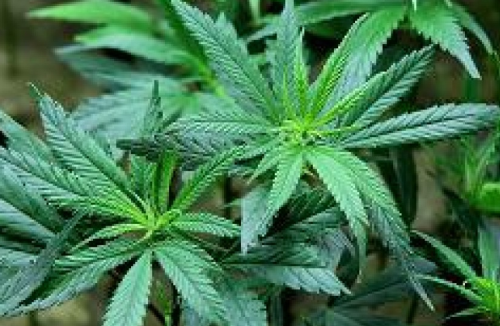 5 years ago
5 years ago
The History Behind the Semantics of Cannabis and Marijuana
“The beginning of wisdom is to call things by their proper name” – Confucius
In an industry already rife with uncertainty around regulations and legalities, the terms used in conjunction with medical marijuana can make the issues even more convoluted. Are “marijuana" and “Cannabis” referring to the same thing?
With roots in both science and politics, the semantics of Cannabis are often debated. To unravel this confusing linguistic issue requires a short botany lesson and then, to add a layer of complexity, a history reminder.
The Botany of Cannabis
From a clinical perspective, Cannabis and marijuana are simply different terms for the same plant genus: Cannabis. Falling under the umbrella of Cannabis are the most commonly-referred to strains of Cannabis Sativa, Cannabis Indica, and Cannabis Ruderalis. The family of flowering plants contains over 170 species and is able to be grown in most any warm, temperate region.
All parts of the plants have been used for many centuries – in a variety of cultures - for pharmaceutical, industrial, and health purposes. In fact, scientists believe that hemp is one of the oldest cultivated fibers, citing archeological evidence of its use from as far back as 10,000 B.C. in Ancient China.
Closer to home, U.S. scientific journals have been publishing evidence of the medical benefits of Cannabis for over 150 years, hailing its treatment of ailments such as headaches and insomnia. Cannabis continues to be a prevalent natural remedy and can be dosed sublingually, smoked or vaped, applied topically through oils and salves, or ingested in the form of edibles.
Perhaps some of the confusion in relation to Cannabis lies in the fact that other terms have been coined to point to the specific uses originating from specific parts of the plant: “marijuana” coming from the dried flower buds, hemp oil from the seeds, hemp fibers from the stem, and CBD oil from a combination of many parts of the plan.
The Historical Roots of Marijuana
Taking a step back in history is important in understanding how the word “marijuana” (or “marihuana”) plays a critical role in the politics and overall reception of Cannabis. While the origin of the word marijuana is often debated, the knowledge that it was deliberated created by supporters of the Cannabis prohibition movement to be inflammatory is not.
Prior to 1894, the word term marijuana was not found to be used or referenced. During the prohibition era, it was dubbed “the devil’s weed” to incite belief that use of the plant could cause addiction, hysteria, and general unsavory behavior.
To further the propaganda, the Spanish word “marijuana” was devise to emphasize the correlation between Mexican immigrants and the plant they were purported to have introduced to America. This move helped to further criminalize Cannabis and perpetuate the discriminatory notions surrounding its use.
How this terminology continues to impact the industry becomes important when legalities and regulation around Cannabis comes into play. One example of is the “Marihuana Tax Act of 1937,” in which Congress introduced the original federal legislation that prohibited marijuana. Interestingly, the act defined “Marihaua” as “…all parts of the plant Cannabis sativa L…but shall not include the mature stalks of such plant, oil and cake made from the seeds of such plant”. It is important to note that these parts are cultivated and most often utilized in the hemp industry.
The Assistant Attorney General of the Treasury Department, Clinton M. Hester, even testified that the act was intentionally create to discourage the use of marijuana by drug addicts and to impose taxes on marijuana. In effect, this legislation ensured that the hemp industry could continue to thrive while the general public persisted in their pursuit to corrupt the perception of recreational and medicinal Cannabis use.
This, and many other cases of public reference to the term “marijuana”, exemplify the power of words and the images associated with them.
Reclaiming Cannabis as Medicine
Fast forward to today’s political and social climate surrounding the use of Cannabis. There are numbers of bills related to the evolving terminology surrounding Cannabis that push to eradicate the use of the word “marijuana” and the stereotypes surrounding it.
The proposed bills hope to permanently replace the word “marijuana” with “Cannabis” in all documentation and materials to further the anti-prohibition movement and bring clarity to over a century of negative connotations – and confusion - around the plan’s substantial benefits.
Sky Dispensaries provides an individual consultation to all patients to help you choose the best medical cannabis products to help you improve your quality of life. We lab test all of our medicines and products for quality in order to provide you with good information to help you make the best informed medication decision.
The blog post The History Behind the Semantics of Cannabis and Marijuana is courtesy of https://skydispensaries.com/news/
Originally appeared on:
Sky Dispensaries
3155 E McDowell Rd
Phoenix, AZ 85008
(602) 812-4695
https://goo.gl/maps/fyn8Rc3hrtz

 5 years ago
5 years ago
What Makes Medical and Recreational Cannabis Different

In 2012, Colorado and Washington became the first states to legalize recreational cannabis. Before that, cannabis was legal in certain states only to those with qualifying medical conditions. As more states follow in Washington and Colorado’s footsteps, “recreational” or “adult-use” have become the commonly used terms for personal cannabis consumption that isn’t exclusively for medical purposes.
But beyond the distinction of consumer intention, what other differences exist between medical and recreational cannabis?
The Medical vs. Recreational Cannabis Shopping Experience
When it comes to the shopping experience itself, medical and recreational shops tend to offer similar experiences. Qualified medical marijuana patients present both their ID to prove they’re legally old enough to purchase cannabis, as well as their valid medical cannabis card. Some medical shops will have a waiting room where patients are called in one at a time to ensure privacy.
Oftentimes, recreational stores are not permitted to provide medical advice to customers, although you can still shop at them as a medical patient. Some shops are also “dual-licensed,” meaning they can cater to the needs of both recreational and medical consumers. They may also offer discounts and tax breaks to medical patients.
Medical dispensaries and dual-licensed shops are best equipped to answer patient questions, especially those that provide education opportunities for their budtenders, such as seminars and certifications. Don’t be afraid to explore multiple dispensaries until you find one with a well-trained staff that you connect with.
Browse Dispensaries Nearby
As for product selection, there tends to be very little difference between medical and recreational menus. At either store type, you’re bound to find the shelves full of various edibles, drinkables, vaporizers, topicals, strains, and concentrates.
Different States, Different Perks
Medical patients may receive certain perks not available to recreational consumers. These generally include:
- Lower costs and taxes
- Higher THC potency limits
- Higher quantity restrictions
- Legal access for minors in approved medical cases (e.g., cancer or epilepsy)
- Medical patients may be allowed to grow their own cannabis (or are permitted a higher plant count than recreational consumers)
How Are Medical and Recreational Cannabis Perceived Differently?
Social stigma and perception further bolden the dividing line between medical and recreational cannabis, as a greater percentage of Americans support medical cannabis than recreational adult use.
Using cannabis for enjoyment is still somewhat taboo in the public eye, although you don’t need to be suffering a severe disease to find wellness benefits in casual use. For example, when a state legalizes recreational cannabis, a consumer might first fall in love with the easy access to a variety of high-quality strains, only to discover an infused topical that works wonders on a chronic condition. Or, a healthy adult may find that a low-dose tincture helps alleviate daily stress and anxiety.
As new products and medicines with a wide range of benefits come to market, it’s easy to become fan of both recreational and medical cannabis. And it’s only a matter of time before state laws come to reflect that.
Read More:
What Makes Medical and Recreational Cannabis Different


